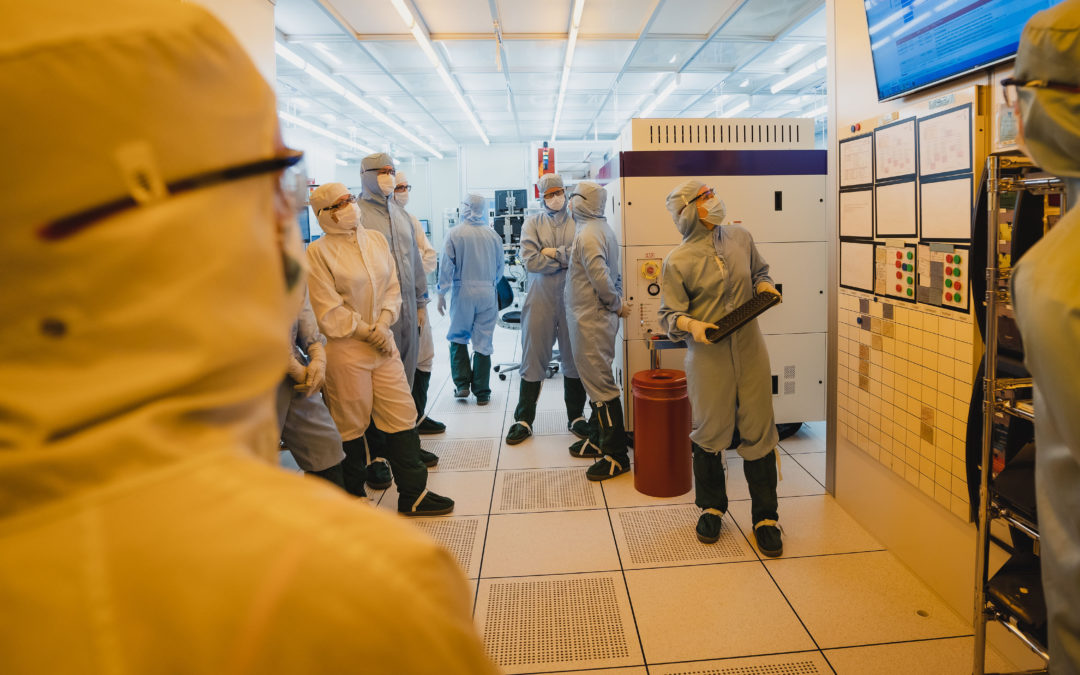Murata Finland has managers on each of its five shifts. Depending on the production area, there are 1–2 managers per shift. The responsibility for the entirety and operation of the production is the cornerstone of the shift managers’ work. In this blog post, I will discuss this management work.
Each of our shift managers (Production Supervisor as we call ourselves) has a team of operators and regional managers. In my own team, there are 17 production workers, or operators, working in wafer manufacturing on the A shift, the weekday day shift every other week from 6.30 am to 2.45 pm and every other week from 2.30 pm to 10.45 pm.
Standardized production environment
A major part of management is personnel management. I am particularly excited to be able to monitor and enable the development and improvement that these employees make in their work. The production manager is responsible for ensuring that we have a team of operators in Murata Finland’s production who have the skills and expertise for the job, an understanding of our operations and a willingness to commit and develop their own work. The responsibility for implementing strategic objectives is also an important part of our work. In turn, well-being at work always depends on the manager’s ability to lead from close quarters and to be present for the employees. In our company, this is solved by providing shift managers with their own workstation in the production area, so that we can be close to the work.
The responsibility of supervising work is strongly linked to our standardized production environment, which supports our quality approach and our aim to provide our customers with products that meet their needs. To maintain this standardized way of doing things, we have labor legislation, work instructions and codes of conduct to support our work. The production manager monitors compliance with these key work guidelines and takes action on them.
Being human, it is fair to say that there are as many ways of doing things as there are people, and the need to find a standardized way of working for everyone adds its own spice to the day-to-day work. What suits one person, takes another time to learn. In setting these guidelines, the manager’s knowledge of the team is very important.
Occupational safety is observed
From people management to customer responsibility. Although the production manager is not in direct contact with the customer, this customer responsibility takes the form of customer deliveries and output targets. In order to make production decisions on customer responsibility, a whole range of experts and production managers need to be involved.
Occupational safety is also an essential part of our work. We have an active occupational safety organization that supports the managers’ role in ensuring that everyone has a safe way of working, monitoring incidents and responding to them. The manager is involved in developing a safe working environment and providing training for staff. We carry out regular Elmeri observation rounds in the production environment to observe and improve the safe working environment. We are also getting a safety detection system, which will allow us to better process the observations of operators.
Our production is an ever-changing environment. Two similar days rarely come in a row. While it is constantly changing, it is also multidimensional and extensive. Creating a snapshot of the production as a whole is part of daily management work. While individual teams may focus on one issue at a time, managers have a responsibility to understand the bigger picture and the implications of every decision for the future. This big picture is supported by specific experts, both in production and in support roles. Every day, we day-to-day managers meet with our regional managers to deal with changing situations and discuss the best measures to ensure that production is promoted.
Iina Wäre, Production Supervisor
You can read more about Murata’s shift model on the blog of our other Production Supervisor Juha Matilainen.


Recent Comments